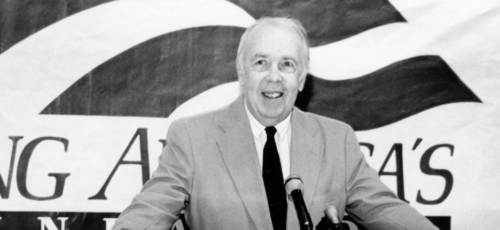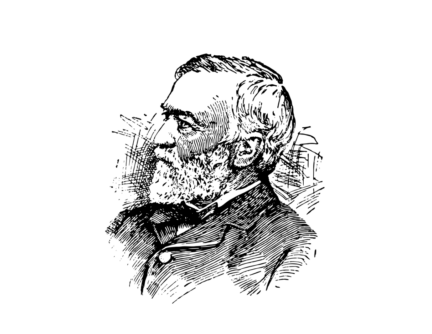Jonathan Haidt masterfully explains the cultural roots of our political polarization.
If there is one question that sums up all the problems with today’s politics, it is this one: Why are people so angry?
Here we are, with the stock market up 25 percent in a year and more choice and variety in our lives than at any time in history, and instead there are far too many Americans with a festering sense of hate against people who disagree with them, the sort of blinding, white-hot lunacy that causes “antifa” leftists to silence conservative speakers and “alt-right” extremists to drive cars into crowds.
It is the attitude that begins with the mistaken premise that the only way to ensure your view dominates is to crush your opponents as thoroughly as the Romans leveled Carthage.
Jonathan Haidt, who teaches in the business school of New York University, analyzes the problem in this very well-written piece, which was delivered as the annual Wriston Lecture at the Manhattan Institute[1] in November. Haidt is a founder of Heterodox Academy, a major resource for people fighting political correctness on campus.
Haidt says there are two primary causes of political polarization in America, one being Newt Gingrich’s decision, when Republicans took over the House of Representatives in 1995, to limit Congressmen to three days a week in Washington so they wouldn’t form friendships with Democrats.
It is true that there aren’t many friendships on Capitol Hill between Democrats and Republicans. George Packer once did a New Yorker piece where he tried to find two members of Congress in both parties who liked each other. (I think he found only one pair.) But it takes two people not to talk to each other, and here Democrats are as guilty as Republicans in polarizing Congress.
Haidt is on much sounder ground when he looks at college campuses. Here he looks at a poisonous doctrine called “intersectionality,” first devised by University of California (Los Angeles) law professor Kimberlé Crenshaw in 1989, but which has metastasized into something more radical than what Crenshaw envisioned.
“Students memorize diagrams showing matrices of privilege and oppression,” Haidt writes, and “all of the binary dimensions of oppression are said to be interlocking and overlapping. America is said to be one giant matrix of oppression, and its victims cannot fight their battles separately. They must all come together to fight their common enemy, the group who sits on top of the pyramid of oppression: the straight, white, cis-gendered, able-bodied Christian or Jewish or possibly atheist male.”
Haidt notes that when he studied at Yale in the 1980s he learned about many different political philosophies. Today, he says, all students learn about is power, which they are told they don’t have and the evil straight white males do have. So they wage endless war in silencing their enemies.
Usually the administration is spineless. But Haidt says some administrators, most notably Carol Christ at the University of California (Berkeley) and University of Chicago president Robert Zimmer, are robustly standing for free speech. He also links to a very interesting article by Chris Bodenner at The Atlantic showing hopeful developments at Reed College.
Reed College, which is both one of the most liberal colleges in the country and one of the most academically rigorous, requires all students to take Humanities 110. A group of mostly African-American students formed Reed Against Racism, which decided to wage war in the 2016-17 year against the class, which it said “promoted white supremacy.” The majority of the texts in the course are classical ones.
Most of the student boycotts and protests target guest speakers. Reed Against Racism protested every Humanities 110 class. The administration agreed with all the group’s demands, including hiring more people for the Office of Inclusive Community and inviting members of Reed Against Racism to review the curriculum with faculty. (The students gave up coming to the meetings because they said they didn’t want to listen to “full-grown faculty cry about Aristotle.”)
Students only protested against Reed Against Racism using pseudonyms on social media. But the freshmen arriving in the fall of 2017 had more spine. One video, which went viral, showed an African American freshman breaking up an argument between a professor and Reed Against Racism members by saying, “This is a classroom! This is not the place! Right now we are trying to learn! We’re the freshmen students!” Another classroom boycott was broken up when the freshmen and the teacher walked out and held a class.
Reed Against Racism seems to have died down for now after the freshmen revolt but their story shows that speech-silencing radicals can be defeated. But Haidt says the way to do this takes place years before college, when children are so carefully supervised that they don’t have a chance to play by themselves[2].
So he is one of several people collaborating on a new nonprofit, Let Grow, which encourages parents to let children have more freedom, because the more independence they have as kids the less likely they are to demand colleges be a conflict-free “safe space.”
One of Haidt’s partners is Lenore Skenazy, who achieved national fame when she let her child ride the New York City subway alone, a move routine in the previous century but shocking in ours.
Skenazy also has a nonprofit, Free Range Kids, which documents various abuses social service agencies have made against parents who let their children have some freedom.
What should donors do to combat leftist intolerance on campus? One way would be to withhold contributions to schools where speech-silencers run amok. The only case I know of where donor contributions fell after leftists erupted on campus is the University of Missouri, but I’m sure there are other examples.
As I noted in my monograph, Games Universities Play, the more restrictions you impose on gifts to colleges, the better they can be used to address causes you support.
Donors should also realize that the dominance of intolerant radicals on campus is not absolute and what Haidt calls “the culture of fear, the prevalence of unchallenged error, and the shackles placed on reason” will eventually end.
“I am pessimistic about our future,” Haidt concludes, “but let me state clearly that I have low confidence in my pessimism.”
[1] I have done editing for the Manhattan Institute, which published my monograph By Their Bootstraps.
[2] We must also credit David Brooks, who fifteen years ago was one of the first people to notice the rise of “helicopter parenting” in a brilliant article in The Atlantic.






